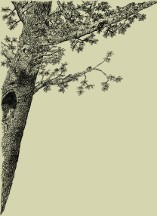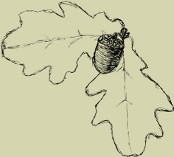42 41 40 39 38 37 36 35 34 33 32 31 30 29 28 27 26 25 24 23 22 21 20 19 18 17 16 15 14 13 12 11 10 9 8 7 6 5 4 3 2 1
Zeszyt 26 (1995)
This paper enumerates Polish didactic and scientific research institutions (in wood technology). Main directions, methods and techniques of research, as well as the most important achievements presented in print and at the scientific meetings were discussed, also including the international cooperation aspects. The total amount of scientific staff and the share of their consecutive age groups were characterized, drawing attention to a well established position of the professorial staff, being highly esteemed both inside and outside of the country; to the contrary, the inflow of the young staff is stiff below the realistic needs. The Polish wood technology magazines and journals were discussed.
To summarize the problem, most important needs and threatening dangers were estimated as: the increasing average age of scientists, a highly inadequate financing of the research, lack of a consequently formulated governmental policies in this respect, weakening of links between the science and the industry and the neglecting in development of some important scientific branches.
In the paper the dependencies of the specific force of free cutting of the black locust tree upon the roughness of the cutting knife face are defined. The values of the dependencies have been calculated only in respect of cutting lengthwise, crosswise and perpendicularly to wood fibers. In the research the angle of relief of 10° and the cutting angles of 40° and 60° have been applied.
The chips cut had a thickness of 0.1, 0.2, 0.3 mm. The roughness of the cutting tool face of the knives made of alloy tool steel NCV1 has been expressed by means of Ra parameter. Functional dependencies of the specific force of cutting upon the roughness of the cutting knife face are presented in table 2. Graphic representations of these dependencies are shown with the help of the illustrations 3-8.
The permeability of poplar wood on the saturated waterborne preservatives and coal tar creosote was investigated. The influence of moisture of sapwood and heartwood and time of immersion on the penetration and the retention preservatives was determined.
The investigations of the influence of high energy ultrasonic treatment on cellulose and holocellulose were carried out. The samples were sonicated during one hour in low frequency field (21 kHz) at wave amplitude of 32 µm. Infrared spectroscopic studies and SEM analysis were carried on. It was found that the effects of ultrasonic irradiation depend on the biopolymer structure. The predominant phenomenon after ultrasonic treatment was separation of the non-cellulosic part of holocellulose. The cellulose proved to be resistant to ultrasonic action.
Attempts were made ti ascertain relations between selected physical and mechanical properties of Scots pine (Pinus sylvestris L.) wood and initial distance of seedlings planting. Analyses covered such properties of wood as density, compression strength and modulus of elasticity at bending for the wood from the trees in age ca 40 and 60 years collected in forest stand where initial distance between seedlings was standard (commonly used) and loosened. It has been found that the initial distance has had effect upon technical quality of obtained timber. Generally wood from trees planted in standard distance was characterized by the higher strength parameters than wood from trees planted in loose initial distances.
Determined were: moisture content, extractives in ethanol-benzene mixture according to Soxhlet method, Seifert's cellulose, Klason lignin content according to Tappi method, ash content and acidity of wood according to Gray's method. Scots pine wood for analysis was obtained from 40 and 60 years old forest stands with various initial plantation spacings. In general it has been found that the wood planted in standard spacings has higher content of cellulose and higher total lignin than wood planted in loose spacings. This trend applies in general to other constituents of Scots Pine wood.
Authors are of the opinion that further and wider investigations are to be carried on.
Scots pine trees n the average age about 40 and 60 years were selected for research of the annual growth in thickness and the length, and diameter of tracheids from the spring and summer wood.
Measurements were made on the 2nd ring of juvenile wood (from pith), last growth ring from juvenile wood, half of intermediate zone between juvenile and mature wood, and the last growth ring (dated as of 1993). This last growth ring was named as “mature wood”. The quantity of juvenile wood was measured and it was expressed as percentage of the stem radius. All measurements were made on the wood on the breast diameter of tree. It was found that the percentage of late wood has been rather small in the younger trees (6% in loose spacing, 7.2% in standard spacings). The most interesting results were obtained when considering percentage of juvenile wood in the cross section on the height of 1.3 m above ground. At the younger (40 years old) pines it has been 67% to 43% in loose and standard spacings respectively. The same ratio for the older trees was 48% to 18% respectively.
Knowing that the measured tracheids length has tendency to be shorter in juvenile wood we could asses that in practical use e.g. for structural purposes, it is of lesser value.
Results of our work are compatible with the studies of strength properties made on the same wood.
When considering the effect of loose initial spacings of plantation we observed as a rule longer and more slender tracheids in wood from trees grown on plantations with standard initial spacings. This is in accordance with the findings of other authors concerning spruce and Japanese cedar.
Under laboratory conditions aspen wood (Populus tremula L.) was subject to the action of selected fungi causing brown, white, soft rot and mould growth. Fungus action lasted 4, 8, 12 and 16 weeks, wood samples were taken from height of 5 and 10 m above butt end. Sample mass decrement was taken as the basic criterion for the assessment of wood rot degree. The dynamics of wood destruction under the action of brown and white rot fungi was also determined.
Investigations on the fungitoxic value of three quaternary ammonium compounds (lauryldimethylbenzylammonium chloride) with borates in relation to wood destroying fungi were carried out. The agar-plate (screening) and agar-block methods were applied. A wide fungitoxic activity range of the all three formulation and very small leachability has been proved.
Miniature pine and beech wood samples were exposed under the laboratory conditions to the actions of the Chlorhormidium flaccidum alga. After the exposition period hygroscopicity of wood was tested, A alight statistically proved effect of aerophytes on wood hygroscopicity in this respect was observed.
An investigation of the samples of oak wood, obtained from the disks cut out from the butt end in the half of the length and from the top, was carried out.
The age of examined oak wood is 20 years and 120 years (province of Olsztyn) and 40 years and 100 years (province Jelenia Góra). The samples were obtained separately from sapwood and heartwood. The amount of mineral substances was measured in the process if combustion of 2.5 g of crumbled wood in the temperature 873 K. The contents of Ca2+, K+, Mg2+, Na+, Cu2+, Fe3+, Zn2+, Mn2+, Pb2+, Hg2+ were determined by the use of the computer spectrometer of atomic absorption PERKIN-ELMER 300. The xamination showed that the highest amount of mineral substances is positioned in the sapwood taken from the top of the stem. Independently from the environment in which the tree was grown and its age, in the oak sapwood from the top, there is the highest amount of potassium, and further, calcium. Also independently the place the cross section was made, the amount of potassium in the sapwood is several times higher than much lower then the amounts of potassium and calcium (from 34 ppm to 265 ppm) but in the sapwood is more magnesium than in the heartwood. The investigated oak wood is characterized by far lower amount of sodium (Na+), manganese (Mn2+), iron (Fe3+), zinc (Zn2+), copper (Cu2+), lead (Pb2+) and mercury (Hg2+). If these elements appeared at all, only the trace amount could have been found. Therefore these elements were not taken into account in the investigation. In the oak wood the amount of sodium, manganese, iron and zinc is higher in the top than in the butt end of the stem, however, the amount of copper is almost the same regardless of the age of the tree and the place where it was grown.
Sorption and desorption properties as well as shrinkage and swelling of pine sapwood before and after extraction with the alcohol-benzene mixture and after treated with the 1% NaOH solution were investigated.
Investigations on the effect of extracting by substances on chosen higroscopic properties of sapwood pine were carried out on samples of 30 × 30 × 10 mm in size. The samples were subjected to extraction with alcohol-benzene mixture (1:1) and treated with 1% NaOH solution.
Investigations on sorption and desorption of water vapour as well as swelling and shrinkage were carried out in air conditioned chambers at assumed suitable relative humidities above the sulfuric acid.
On the base of the results obtained it has been found that the isolation of extractive substances from wood leads to a little increase of its higroscopic properties. At a relative air amounting humidity φ amounting to about 100% in the water vapour sorption process, the increase of the equilibrium moisture content is 0.8% and in the desorption process −1.9%.
At the relative air humidity approximate to nearly 100% the linear tangential swelling of wood before extraction amounted 8.5%, the radial swelling — to 4.2% and after extraction the alcoholbenzen mixture — to 8.8% and to 4.9% respectively.
The maximum wood shrinkage related to the size of samples, at the point of saturation of wood fibers in tangential and radial direction amounts correspondingly before extraction the alcoholbenzen mixture of 7.3% and 3.8%.
The increase of some hygroscopic properties of wood is observed after treating it with 1% NaOH upon samples of sapwood pine. At the relative air humidity of about 100% in the water vapour sorption process, the increase of the equilibrium moisture content is 6.9% and in the desorption process 8.4%.
At the relative air humidity of nearing 100% linear swelling in tangential direction amounted — 12.8%, the radial — 7.1%.
The maximum wood shrinkage related to the size of samples, at the point of saturation of wood fibers in tangential and radial direction amounts correspondingly 9.5% and 5.3%.
Isothermal pyrolysis of pine and beech wood treated with diammonium phosphate and potassium carbonate was studied by thermogravimetry (TG) and differential thermal analysis (DTA).
The presence of salts influenced the higher rate of thermal degradation of wood and increased in the char residue according to the salt content.
Potassium carbonate is the catalyst of secondary reactions of thermal decomposition of wood products.
Comparative studies were made on wood moisture content (MC) effect on wood tension and compression along the grain. The experiments were conducted on geometrically similar specimens of equal cross sections in specimen;s working zone. Pine wood (Pinus sylvestris L.), oak wood (Quercus petraea Liebl.) and beech wood (Fagus sylvatica L.) were selected for testing purposes.
The ratio of tensile strength σ+max to compressive strength σ−max along the grain does not practically depend on wood species. The value of quotient σ+max/σ−max increases with linear relationship with wood MC increase is equal 1.25 on average for oven dry wood (MC = 0%), 2 for air-dry wood (MC = 12%) and 4 for green wood (MC > 30%). Deformation at failure practically does not depend on wood species and is equal in tension test: 0.5 to 0.8%, and 0.9 to 1.3% in along the grain compression test. While wood MC is increasing the deformation at failure in tension test tends to increasing and deformation in compression test reveals some decreasing tendency.
Three kinds of papermakers' glues were made basing on modified rosin and the research was conducted to use them for paper-pulp sizing particularly in the medium close to neutral.















 Pobierz PDF
Pobierz PDF